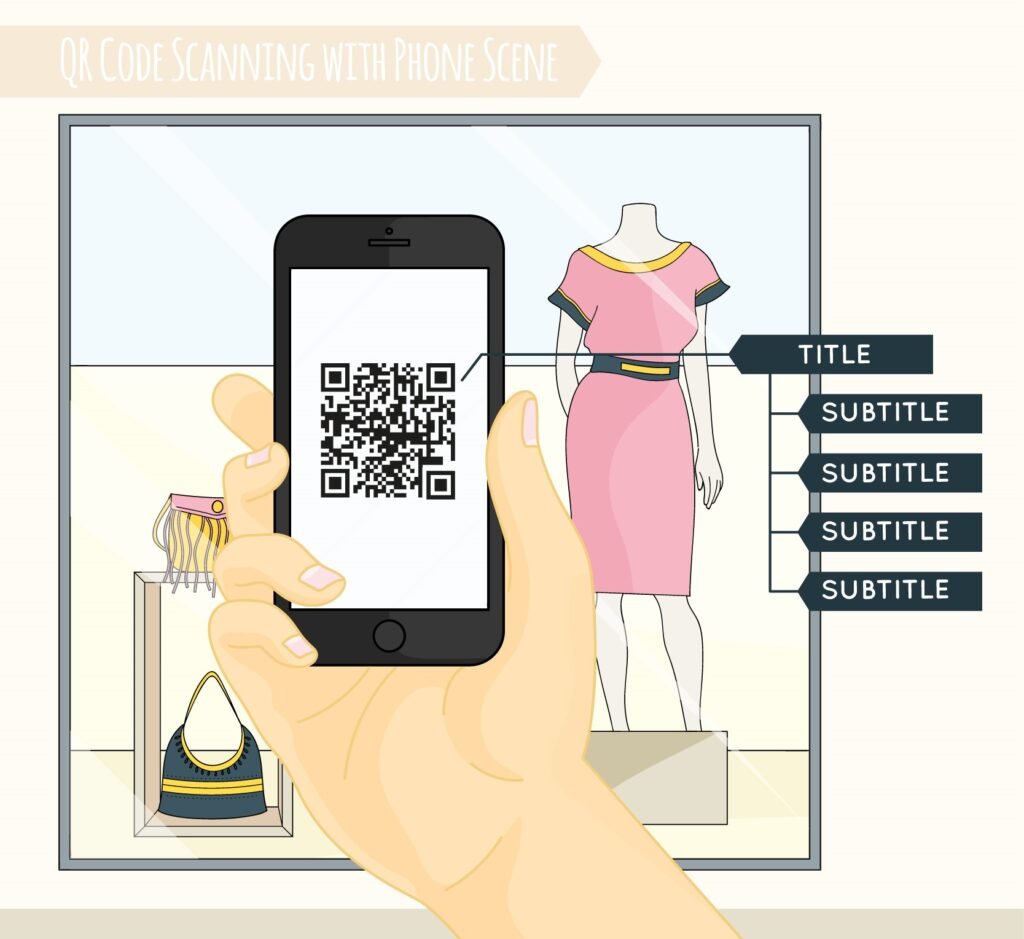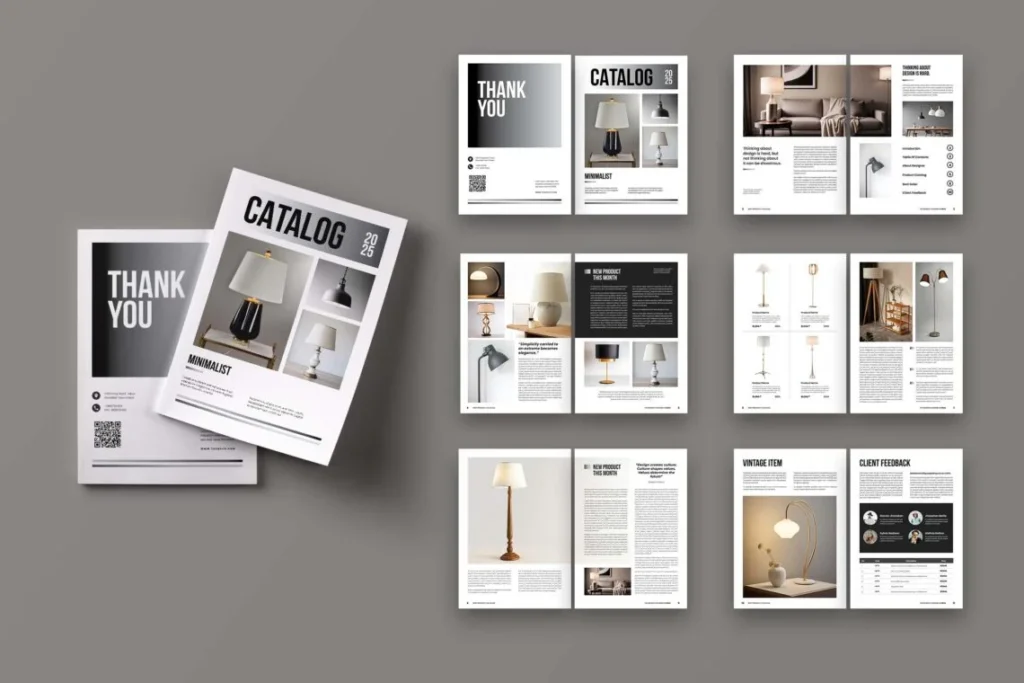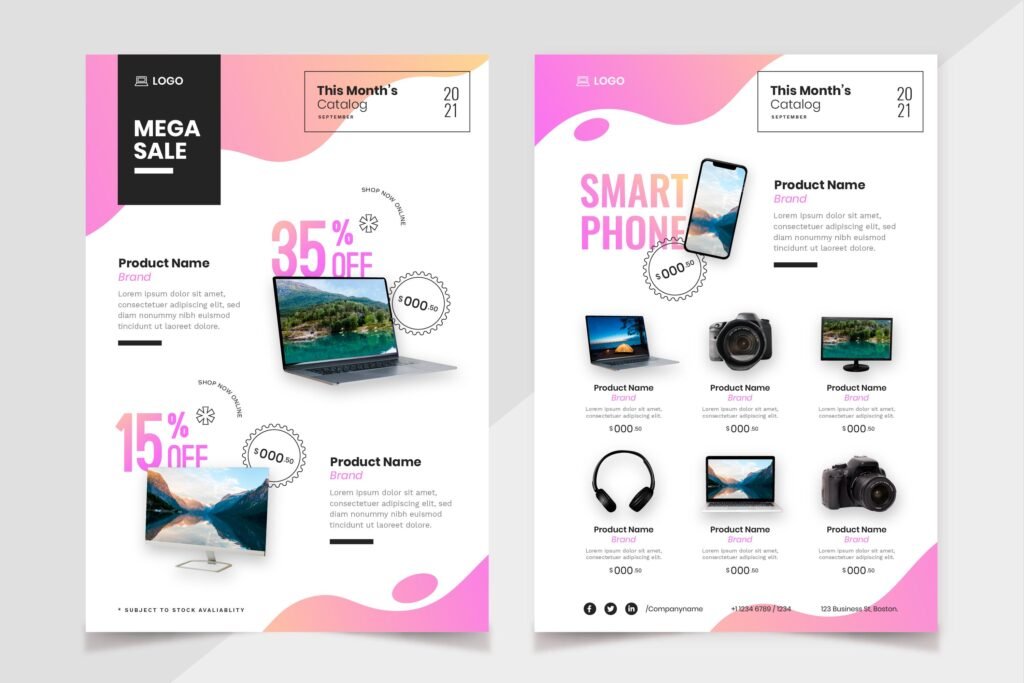Integrating QR Codes and CTAs into Product Catalogue Design
The digital revolution has transformed how customers interact with marketing materials, and product catalogues are no exception. While traditional catalogues served as beautiful showcases, today’s customers expect immediate access to additional information, instant purchasing options, and seamless digital experiences. This is where QR codes in product catalogues and strategic call-to-action integration become game-changers. Modern interactive catalogue design bridges the gap between physical and digital marketing, creating engaging experiences that drive immediate action. By strategically incorporating QR codes and compelling CTAs, businesses can transform static catalogues into dynamic sales tools that guide customers through complete purchase journeys. The Power of QR Codes in Modern Catalogue Design Instant Digital Connection QR codes for catalogues eliminate the friction between seeing a product and taking action. Instead of typing long URLs or searching for products online, customers simply scan and instantly access detailed product pages, video demonstrations, or purchase options. This immediate connection is crucial in today’s fast-paced world, where purchase decisions happen quickly. A customer browsing your catalogue can instantly check real-time pricing, read additional reviews, or place an order without leaving the moment of interest. Enhanced Product Information Physical catalogues have space limitations, but QR codes unlock unlimited digital real estate. You can provide comprehensive product specifications, multiple product angles, customer testimonials, and detailed usage instructions without cluttering your printed pages. Trackable Customer Engagement Unlike traditional catalogues, digital catalogue integration through QR codes provides valuable analytics. You can track which products generate the most interest, identify popular catalogue sections, and understand customer behaviour patterns to optimise future designs. Strategic CTA Placement for Maximum Impact Understanding CTA Psychology Effective call-to-action design leverages psychological triggers that motivate immediate action. The best CTAs create urgency, reduce friction, and clearly communicate the value proposition. Key CTA principles: Clarity: Customers should instantly understand what happens when they act Value: The benefit of taking action must be immediately apparent Urgency: Time-sensitive language encourages immediate response Visibility: CTAs must stand out without overwhelming the design CTA Types for Different Catalogue Objectives Information-Gathering CTAs: “Scan for Technical Specifications” “View Installation Video” “Download User Manual” Purchase-Driven CTAs: “Order Now with Free Shipping” “Get Instant Quote” “Reserve Your Unit Today” Engagement-Focused CTAs: “Join Our VIP Customer List” “Schedule Product Demo” “Contact Local Dealer” Best Practices for QR Code Integration Optimal Placement and Sizing QR code placement in catalogues requires strategic thinking about natural reading patterns and visual hierarchy. Place QR codes where customers naturally pause, next to key product benefits, at the end of product descriptions, or alongside pricing information. Size guidelines: Minimum 1 inch x 1 inch for reliable scanning Ensure adequate white space around code Test scanning from typical reading distances Consider print quality and paper texture effects Clear Instructions and Context Never assume customers automatically understand QR code functionality. Include brief, clear instructions that explain the value of scanning. Effective QR code instructions: “Scan to view product in action” “QR code → Instant pricing and availability” “Scan for customer reviews and ratings” Mobile-Optimised Landing Pages Every QR code should lead to mobile-optimised pages designed for quick loading and easy navigation. Customers scanning from catalogues expect immediate, relevant information without complex navigation requirements. CTA Design Elements That Convert Visual Design Principles Interactive design elements for CTAs should follow established visual hierarchy principles while maintaining brand consistency. Design considerations: Colour contrast: CTAs should stand out without clashing with brand colours Typography: Use fonts that are easily readable at catalogue size Shape and borders: Buttons and boxes create clear action boundaries Directional cues: Arrows or pointing elements can increase CTA effectiveness Language and Messaging Effective catalogue CTAs use action-oriented language that creates excitement and reduces hesitation. High-converting CTA phrases: “Get Yours Today” (ownership and immediacy) “Join Thousands of Satisfied Customers” (social proof) “Limited Time – Order Now” (scarcity and urgency) “Free Consultation Available” (value and low commitment) Technology Integration Strategies Multi-Channel QR Code Campaigns Smart catalogue design connects QR codes to comprehensive digital campaigns. A single scan might lead customers to product pages, social media content, email subscriptions, or virtual consultations. Multi-channel integration examples: QR codes linking to augmented reality product previews Direct connections to scheduling systems for consultations Integration with customer relationship management systems Social media follow and engagement campaigns Analytics and Performance Tracking Digital catalogue solutions provide detailed insights into customer behaviour and catalogue performance. Key metrics to track: QR code scan rates by product category Time spent on landing pages after scanning Conversion rates from scan to purchase Geographic distribution of catalogue engagement Popular scanning times and days Industry-Specific Applications B2B Industrial Catalogues Industrial catalogues benefit from QR codes linking to detailed technical specifications, CAD drawings, compatibility charts, and direct sales representative contact information. Fashion and Retail Catalogues Fashion catalogues use QR codes for size guides, styling videos, customer reviews, and direct e-commerce integration for immediate purchasing. Technology Product Catalogues Tech catalogues leverage QR codes for software downloads, setup tutorials, comparison tools, and live chat support connections. Service-Based Business Catalogues Service companies use QR codes for appointment scheduling, case study access, testimonial videos, and instant quote generation. Common Implementation Mistakes Overwhelming Design with Too Many Elements Balanced catalogue layouts avoid cluttering pages with excessive QR codes or competing CTAs. Focus on one primary action per product or page section. Generic or Vague CTAs Weak CTAs like “Click Here” or “Learn More” don’t provide compelling reasons for action. Specific, benefit-focused language performs significantly better. Neglecting Mobile Experience Since QR codes direct users to mobile devices, every linked page must provide an excellent mobile experience. Slow loading times or difficult navigation kill conversion potential. Inconsistent Branding QR code landing pages and CTA designs must maintain consistent branding with the physical catalogue to avoid customer confusion and maintain a professional appearance. Measuring Success and Optimisation Key Performance Indicators Catalogue marketing effectiveness improves through careful measurement and optimisation of key metrics: Scan rate: Percentage of catalogue recipients who scan QR codes Conversion rate: Percentage of scans that result in desired actions Engagement time: How long customers spend on linked content Return visits:








